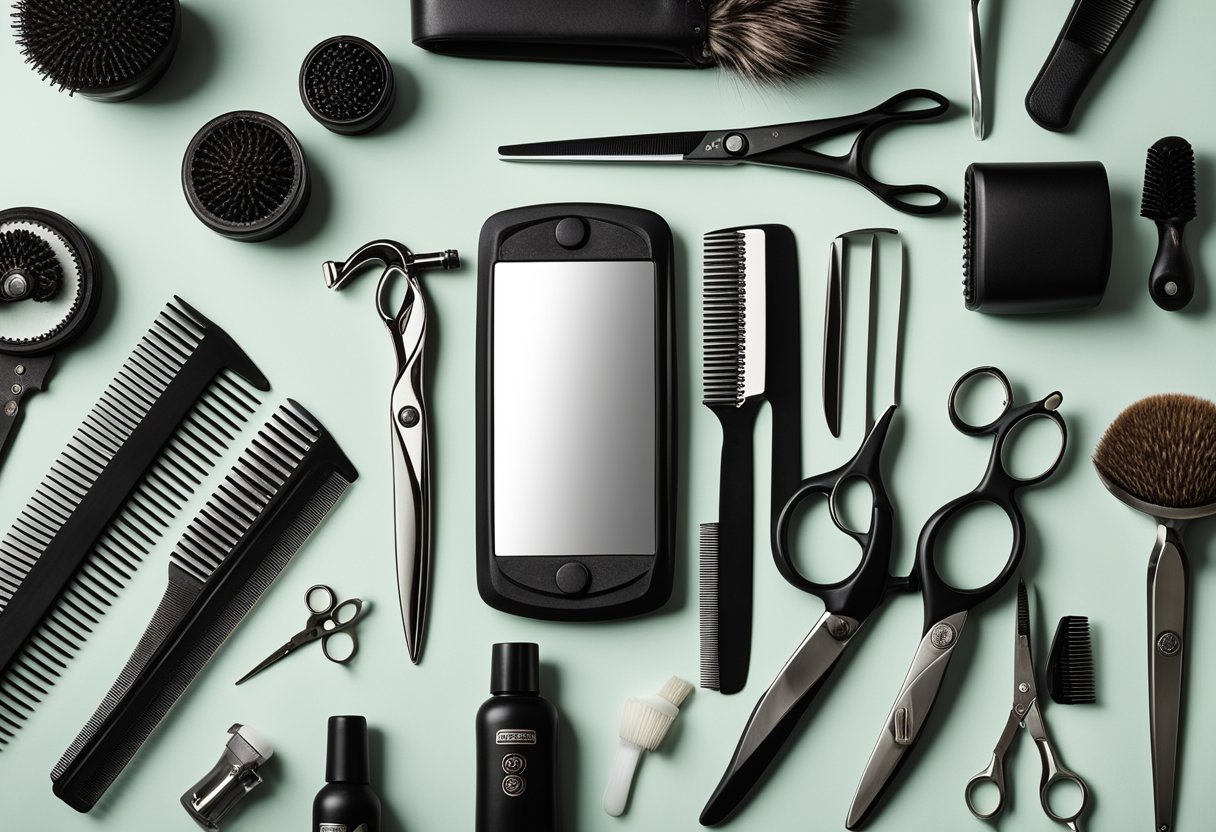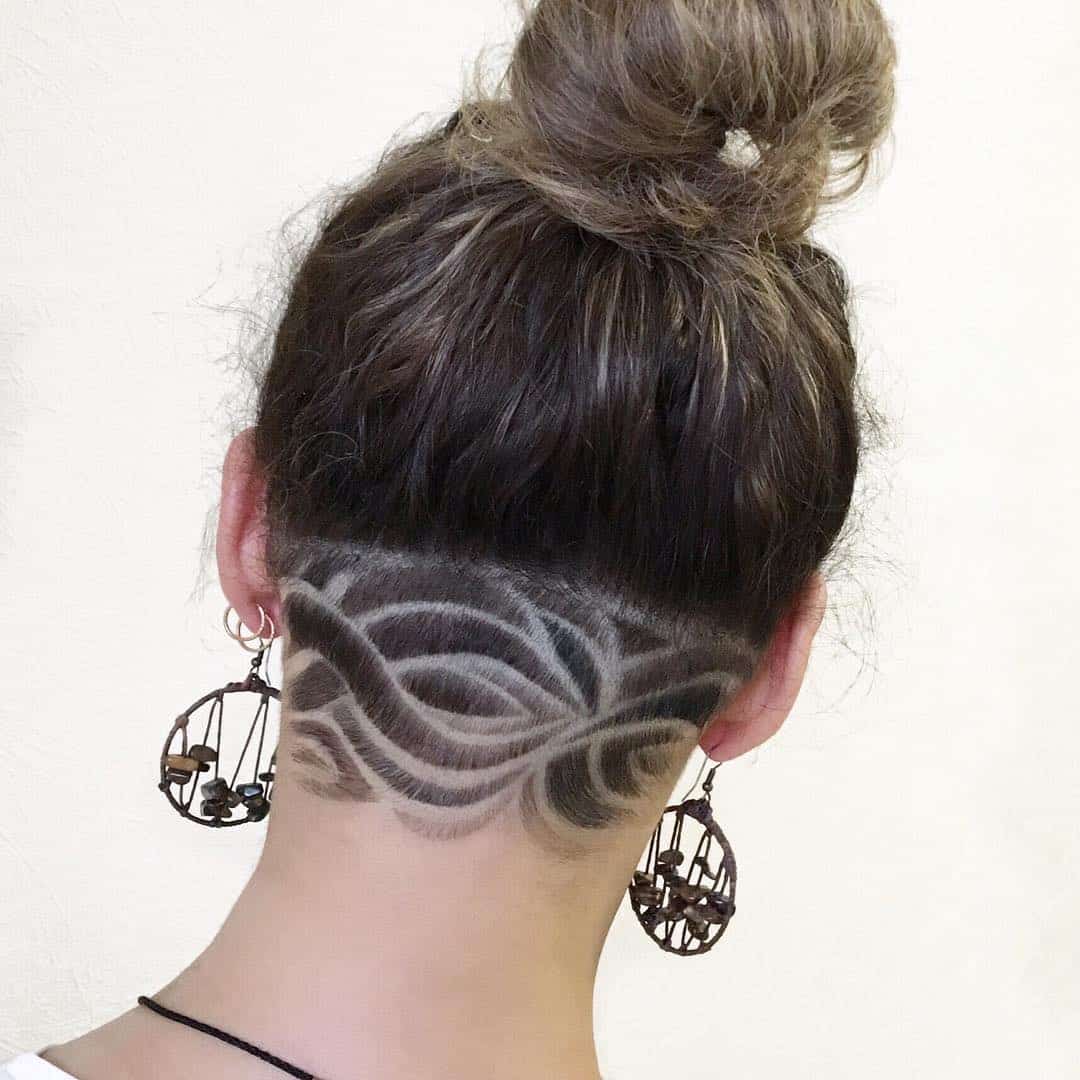Maintaining an undercut hairstyle requires attention to detail and routine care to ensure the look remains fresh and sharp. Characterized by shorter length on the sides and back, often with a longer top, the undercut has resurfaced as a popular hair trend for its versatility and edgy appeal. While it stands out when styled properly, without regular maintenance, the crisp contrast that defines the undercut can become blurred, leading to a less impactful appearance.

To keep an undercut in optimal condition, regular trims are essential. These frequent visits to the barber or stylist help in sustaining the definition between the lengths of hair. Washing and conditioning the hair are equally important, adapting the products used to suit individual hair types and concerns. The use of proper tools and techniques when drying and styling the undercut also plays a vital role in the overall health and appearance of the style, preventing damage and promoting manageability.
Product selection can significantly influence the maintenance and longevity of an undercut. The market offers a wide variety of styling products, each designed to achieve different finishes, from matte to glossy. Selecting the right product contributes not only to the desired look but also to the health of the hair. Lightweight, non-greasy products are often recommended to maintain the style without weighing down the hair or causing undue buildup. Regularly cleaning the hair from product residue ensures that the undercut remains as sharp and clean as the day it was cut.
Chapter Overview
Essential Tools for Undercut Maintenance

Maintaining an undercut requires precision tools dedicated to ensuring sharp lines and proper hair texture. These tools are vital for self-care or professional upkeep.
Trimming Scissors
Trimming scissors are pivotal for maintaining the crisp edges of an undercut. Quality scissors provide control for cutting hair with precision. Look for scissors with a comfortable grip and sharp blades, preferably made of stainless steel for durability and ease of sanitation.
Texturizing Shears
Texturizing shears, also known as thinning shears, are designed to thin the hair and create a blended look at the transitions of an undercut. These shears have teeth on one blade and a smooth one on the other, enabling the removal of bulk without altering the undercut’s overall shape.
Comb and Brush Set
A comb and brush set is essential for both cutting and styling an undercut. A fine-tooth comb provides the control needed for precise trimming, while a brush helps in detangling and evenly distributing hair products. The comb should be of a material that glides through the hair without snagging, such as carbon or hard rubber.
Washing and Conditioning
Proper maintenance of an undercut design involves a diligent washing and conditioning routine to maintain the hair’s health and appearance.
Choosing the Right Products
Selecting appropriate hair care products is crucial for maintaining an undercut. One should choose a shampoo and conditioner based on their hair type:
- For oily hair: Look for products with balancing or volumizing properties.
- For dry or coarse hair: Hydrating or smoothing products can be beneficial.
Washing Techniques
When washing an undercut, frequent shampooing can strip the hair of its natural oils, while inadequate washing might leave it looking unclean. A balanced approach involves:
- Wetting the hair thoroughly with lukewarm water.
- Applying a small amount of shampoo to the scalp, focusing on the area with more hair.
- Gently massaging the shampoo into the scalp with the fingertips.
- Rinsing the shampoo out completely to avoid residue build-up.
Conditioning Best Practices
Conditioner plays a vital role in keeping the hair soft and manageable. When conditioning an undercut, one should:
- Apply conditioner mainly to the ends and mid-lengths of the longer hair sections, keeping it away from the roots to prevent greasiness.
- Leave the conditioner in for a couple of minutes for it to properly hydrate the hair before rinsing thoroughly with cool water to seal the hair cuticles.
Styling Your Undercut
Achieving a polished look with an undercut involves selecting the right products, mastering blow-drying techniques, and applying finishing touches with precision.
Styling Products Selection
The choice of styling products greatly impacts the appearance of an undercut. For a sleek, shiny finish, one should opt for pomades or waxes. These provide hold and sheen, making them ideal for a more classic look. For a matte texture, pastes or clays are preferable, offering a natural finish without the shine. A helpful guide for product selection is as follows:
- For Shine: Pomades, Waxes
- For Matte: Pastes, Clays
Blow-Drying Techniques
Proper blow-drying helps in shaping an undercut and adding volume where needed. To start, one should towel-dry hair to remove excess moisture. When blow-drying, using a nozzle attachment directs the airflow and reduces frizz. Direct the air from the roots to the ends, using a round brush to lift hair at the roots for volume.
- Step 1: Towel-dry hair.
- Step 2: Use a nozzle and a brush while blow-drying.
- Step 3: Direct airflow from roots to ends.
Finishing Touches
The final touches define the overall appearance of the undercut. Use a small amount of product to tame flyaways and add definition. Hairspray can be employed for extra hold if required. Remember to work the product evenly through the hair, paying attention to the direction of styling.
- Tame Flyaways: Small amount of product.
- Extra Hold: Optional hairspray.
- Even Application: Work product through hair evenly.
Regular Trimming Schedule
Maintaining a consistent trimming schedule is crucial to keep an undercut design looking sharp. Regular trims prevent split ends and ensure the hairstyle’s structure remains intact.
Identifying Split Ends
Inspecting the ends of the hair for fraying or splitting is essential. Split ends, if left unaddressed, can travel up the hair shaft, leading to more damage and an unkempt appearance. Key signs of split ends include:
- Whiteness at the tip: Signifying a fray in the hair fiber.
- Thinness: The end of the strand is noticeably finer than the rest.
One should check for split ends every 2-3 weeks.
Scheduling Salon Visits
A strict visitation schedule to a professional stylist ensures an undercut remains fresh. Here is a structured approach:
- Initial Appointment: Set a baseline for the undercut’s style.
- Interval Check: Every 4-6 weeks, depending on hair growth rate.
| Hair Texture | Recommended Visit Interval |
|---|---|
| Fine | Every 4 weeks |
| Medium | Every 4-5 weeks |
| Coarse | Every 5-6 weeks |
Scheduling ahead helps maintain the discipline of regular upkeep.
Common Issues and Solutions
Undercut designs offer a sharp, contemporary look, but maintaining that fresh appearance requires addressing a few common challenges effectively.
Dealing With Hair Growth
As hair grows out, the sharp distinction between the undercut and the longer hair can become blurred. Regular Trims are essential, ideally every 2-4 weeks, to maintain the neat contrast. Using a trimmer at home between barber visits can help manage the sides and back.
- Trim Schedule: Every 2-4 weeks
- At-Home Maintenance: Use trimmers for touch-ups
Managing Cowlicks
Cowlicks can disrupt the flow of an undercut. Applying a strong-hold styling product helps to tame and direct hair into place. Blow-drying with a round brush can also train the hair to lay flat.
- Styling Products: Use strong-hold gels or pomades
- Blow-Drying Technique: Use a round brush and direct heat accordingly
Addressing Thinning Hair
Thinning hair may affect the undercut’s appearance by reducing volume. Volumizing shampoos and thickening products can create the illusion of fuller hair. Keeping the undercut short can also minimize the visibility of thinning areas.
- Shampoos & Products: Choose volumizing and thickening options
- Style Adaptation: Maintain a shorter undercut to evenly distribute hair density

